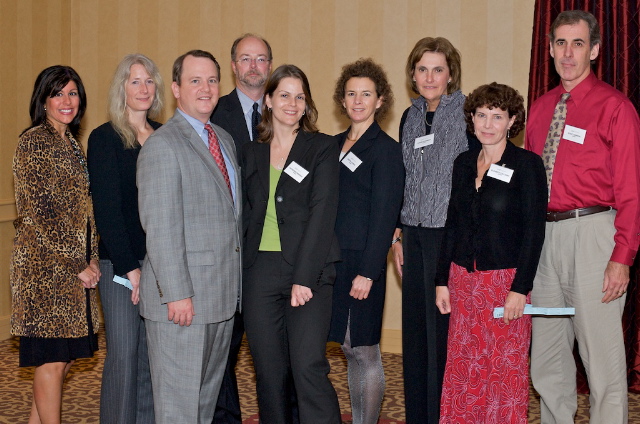|
Queensland Institute Of Architects
The Queensland Institute of Architects was a professional society for architects in Queensland, Australia. It operated from 1888 until 1930, when it became a chapter of the Australian Institute of Architects. History The Queensland Institute of Architects was established in September 1888 in Brisbane with 16 members and Francis Drummond Greville Stanley as its president. Apart from Stanley, its founding members included: * Richard Gailey (vice president) * George Henry Male Addison * Claude William Chambers * John James Clark * John Jacob Cohen * Francis Richard Hall * Henry Hunter Presidents * 1888: Francis Drummond Greville Stanley * 1918–19: George Brockwell Gill * 1923–24: Thomas Blair Moncrieff Wightman * 1927–1931: Lange Powell Other notable members * Leslie Corrie See also *Architecture of Australia Architecture of Australia has generally been consistent with architectural trends in the wider Western world, with some special adaptations to compensate fo ... [...More Info...] [...Related Items...] OR: [Wikipedia] [Google] [Baidu] |
Professional Society
A professional association (also called a professional body, professional organization, or professional society) usually seeks to further a particular profession, the interests of individuals and organisations engaged in that profession, and the public interest. In the United States, such an association is typically a nonprofit business league for tax purposes. Roles The roles of professional associations have been variously defined: "A group, of people in a learned occupation who are entrusted with maintaining control or oversight of the legitimate practice of the occupation;" also a body acting "to safeguard the public interest;" organizations which "represent the interest of the professional practitioners," and so "act to maintain their own privileged and powerful position as a controlling body." Professional associations are ill defined although often have commonality in purpose and activities. In the UK, the Science Council defines a professional body as "an organisation wi ... [...More Info...] [...Related Items...] OR: [Wikipedia] [Google] [Baidu] |
Henry Hunter (architect)
Henry Hunter (1832–1892) was a prominent architect and civil servant in Tasmania and Queensland, Australia. He is best known for his work on churches. During his life was also at various times a state magistrate of Tasmania, a member of the Tasmanian State Board of Education, the Hobart Board of Health, a Commissioner for the New Norfolk Insane Asylum and President of the Queensland Institute of Architects. Life Hunter was born in Nottingham, England, son of Walter and Tomasina Hunter. His father was also an architect, and he studied the craft under his father before attending the Nottingham School of Design. He immigrated to Australia in 1848 with his two sisters and parents, originally settling in South Australia before moving to Tasmania. Upon the death of his parents 2–3 years after arrival in Australia, he moved to Tasmania where his older brother George Hunter, Archdeacon of St Joseph's, had already settled. Hunter spent a short period in the Victorian goldfields on h ... [...More Info...] [...Related Items...] OR: [Wikipedia] [Google] [Baidu] |
Architects From Queensland
An architect is a person who plans, designs and oversees the construction of buildings. To practice architecture means to provide services in connection with the design of buildings and the space within the site surrounding the buildings that have human occupancy or use as their principal purpose. Etymologically, the term architect derives from the Latin ''architectus'', which derives from the Greek (''arkhi-'', chief + ''tekton'', builder), i.e., chief builder. The professional requirements for architects vary from place to place. An architect's decisions affect public safety, and thus the architect must undergo specialized training consisting of advanced education and a ''practicum'' (or internship) for practical experience to earn a license to practice architecture. Practical, technical, and academic requirements for becoming an architect vary by jurisdiction, though the formal study of architecture in academic institutions has played a pivotal role in the development of the ... [...More Info...] [...Related Items...] OR: [Wikipedia] [Google] [Baidu] |
Organizations Established In 1888
An organization or organisation (Commonwealth English; see spelling differences), is an entity—such as a company, an institution, or an association—comprising one or more people and having a particular purpose. The word is derived from the Greek word ''organon'', which means tool or instrument, musical instrument, and organ. Types There are a variety of legal types of organizations, including corporations, governments, non-governmental organizations, political organizations, international organizations, armed forces, charities, not-for-profit corporations, partnerships, cooperatives, and educational institutions, etc. A hybrid organization is a body that operates in both the public sector and the private sector simultaneously, fulfilling public duties and developing commercial market activities. A voluntary association is an organization consisting of volunteers. Such organizations may be able to operate without legal formalities, depending on jurisdiction, incl ... [...More Info...] [...Related Items...] OR: [Wikipedia] [Google] [Baidu] |
Professional Associations Based In Australia
A professional is a member of a profession or any person who works in a specified professional activity. The term also describes the standards of education and training that prepare members of the profession with the particular knowledge and skills necessary to perform their specific role within that profession. In addition, most professionals are subject to strict codes of conduct, enshrining rigorous ethical and moral obligations. Professional standards of practice and ethics for a particular field are typically agreed upon and maintained through widely recognized professional associations, such as the IEEE. Some definitions of "professional" limit this term to those professions that serve some important aspect of public interest and the general good of society.Sullivan, William M. (2nd ed. 2005). ''Work and Integrity: The Crisis and Promise of Professionalism in America''. Jossey Bass.Gardner, Howard and Shulman, Lee S., The Professions in America Today: Crucial but Fragile. Da ... [...More Info...] [...Related Items...] OR: [Wikipedia] [Google] [Baidu] |
Architecture Organisations Based In Australia
Architecture is the art and technique of designing and building, as distinguished from the skills associated with construction. It is both the process and the product of sketching, conceiving, planning, designing, and constructing buildings or other structures. The term comes ; ; . Architectural works, in the material form of buildings, are often perceived as cultural symbols and as works of art. Historical civilizations are often identified with their surviving architectural achievements. The practice, which began in the prehistoric era, has been used as a way of expressing culture for civilizations on all seven continents. For this reason, architecture is considered to be a form of art. Texts on architecture have been written since ancient times. The earliest surviving text on architectural theories is the 1st century AD treatise ''De architectura'' by the Roman architect Vitruvius, according to whom a good building embodies , and (durability, utility, and beauty). Centu ... [...More Info...] [...Related Items...] OR: [Wikipedia] [Google] [Baidu] |
Architecture Of Australia
Architecture of Australia has generally been consistent with architectural trends in the wider Western world, with some special adaptations to compensate for distinctive Australian Climate of Australia, climatic and Culture of Australia, cultural factors. Indigenous Australians produced a wide range of structures and places prior to colonisation. Contemporary Indigenous practitioners are active in a broad range of built environment fields. During Australia's early Western civilisation, Western history, it was a collection of British colonies in which architectural styles were strongly influenced by British architecture, British designs. However, the unique climate of Australia necessitated adaptations, and 20th-century trends reflected the increasing influence of Architecture of the United States, American urban designs and a diversification of the cultural tastes and requirements of an increasingly multicultural Australian society. Notable Australian architectural adaptations incl ... [...More Info...] [...Related Items...] OR: [Wikipedia] [Google] [Baidu] |
Leslie Corrie
Leslie Gordon Corrie (1859–1918) was an architect and the List of Mayors and Lord Mayors of Brisbane, mayor of Brisbane, Queensland from 1902 to 1903. A number of his architectural works are now heritage-listed. Early life Leslie Gordon Corrie was born in Hobart, Tasmania in 1859, the son of James Afleck Corrie of Kirkcudbright and Mary Campbell of Edinburgh. He worked as an architect, first in Hobart and then in Launceston, Tasmania, Launceston. In 1886, he moved to Brisbane. From 1888 to 1892, he was in partnership with his former employer, Henry Hunter (architect), Henry Hunter trading as "Hunter and Corrie". From 1898 to 1905, he was in partnership with G.H.M. Addison as Addison and Corrie. At other times he had a solo practice. He was a founding member of the Queensland Institute of Architects in 1887, and was the vice president of the Institute in 1901. On 25 March 1899, Corrie married Christina Jane Corrie, Christina Jane Macpherson at St Thomas' Church, Enfield, New ... [...More Info...] [...Related Items...] OR: [Wikipedia] [Google] [Baidu] |
Lange Powell
Lange Leopold Powell (1886–1938) was a noted architect who designed many important buildings in Brisbane and the state of Queensland. He started practice in 1909; his major works included St Martin's War Memorial Hospital (opened 1922) and the Masonic Temple, Brisbane (1928) Powell served as president of the Queensland Institute of Architects (1927–1931), as president of the Australian Institute of Architects (1928–1929), and as president of the Royal Australian Institute of Architects (1932–1933). Early years: 1886-1910 Family life and education Langé Leopold Powell was born in Rockhampton, Australia, on 2 July 1886 to the Methodist minister William Powell and his second wife, Mary Ellen née Zillman. He was the second of three children from William Powell’s second marriage and his seventh surviving child. Powell was named after Zillman’s grandparents, Clare Lange and Leopold Zillman, who in 1938 were among the first free settlers in the wider Brisbane distric ... [...More Info...] [...Related Items...] OR: [Wikipedia] [Google] [Baidu] |
Thomas Blair Moncrieff Wightman
Thomas Blair Moncrieff Wightman (1884–1972) was an architect in Queensland, Australia. A number of his works are now heritage-listed. Early life Thomas Blair Moncrieff Wightman was born in Glasgow, Scotland in 1884, the son of Robert Anderson Wightman and his wife Jeanie Greenless (née Dunsmore). He trained in Scotland as an architect and arrived in Brisbane at the age of 26. He married Hannah Matkin in 1910 in the All Saints Anglican Church in Spring Hill, Brisbane. The couple had one daughter, Jean, born 1911. Career as an architect On arrival in Brisbane, he first lectured in architecture at the Brisbane Central Technical College, then was employed by architects Atkinson and McLay in 1912, and was in private practice in Brisbane by 1913 – firstly on his own, then as Wightman and Phillips from 1914 to 1918. From 1919 he practised alone until his retirement . He was a councillor of the Queensland Institute of Architects and its president in 1923-24. He was elected ... [...More Info...] [...Related Items...] OR: [Wikipedia] [Google] [Baidu] |
George Brockwell Gill
George Brockwell Gill (1857–1954) was an architect in Ipswich, Queensland, Australia. Many of the buildings he designed are heritage-listed. Early life George Brockwell Gill was born in 1857 in the Lambert district of Surrey, England. Architectural career Gill emigrated from London and settled in Ipswich in 1886 where he commenced work as an architect for the firm of Samuel Shenton. Gill took over Shenton's practice in 1889 when Shenton retired. Gill had been elected Associate of the Queensland Institute of Architects in 1904 and Fellow by 1913. He was its Vice-President in 1914-16 and President in 1918-19. Significant works include: * Baptist Church * Bostock Chambers * Charleville War Memorial * City View Hotel * Esk War Memorial * Fairy Knoll * Ipswich Flour Mill * Hotel Metropole * Ipswich Club House * Ipswich Girls Grammar School * Ipswich Grammar School * Marburg Community Centre and First World War Memorial *Pen Y Llechwedd * Queen Victoria Silver Jubilee Memorial Tec ... [...More Info...] [...Related Items...] OR: [Wikipedia] [Google] [Baidu] |






